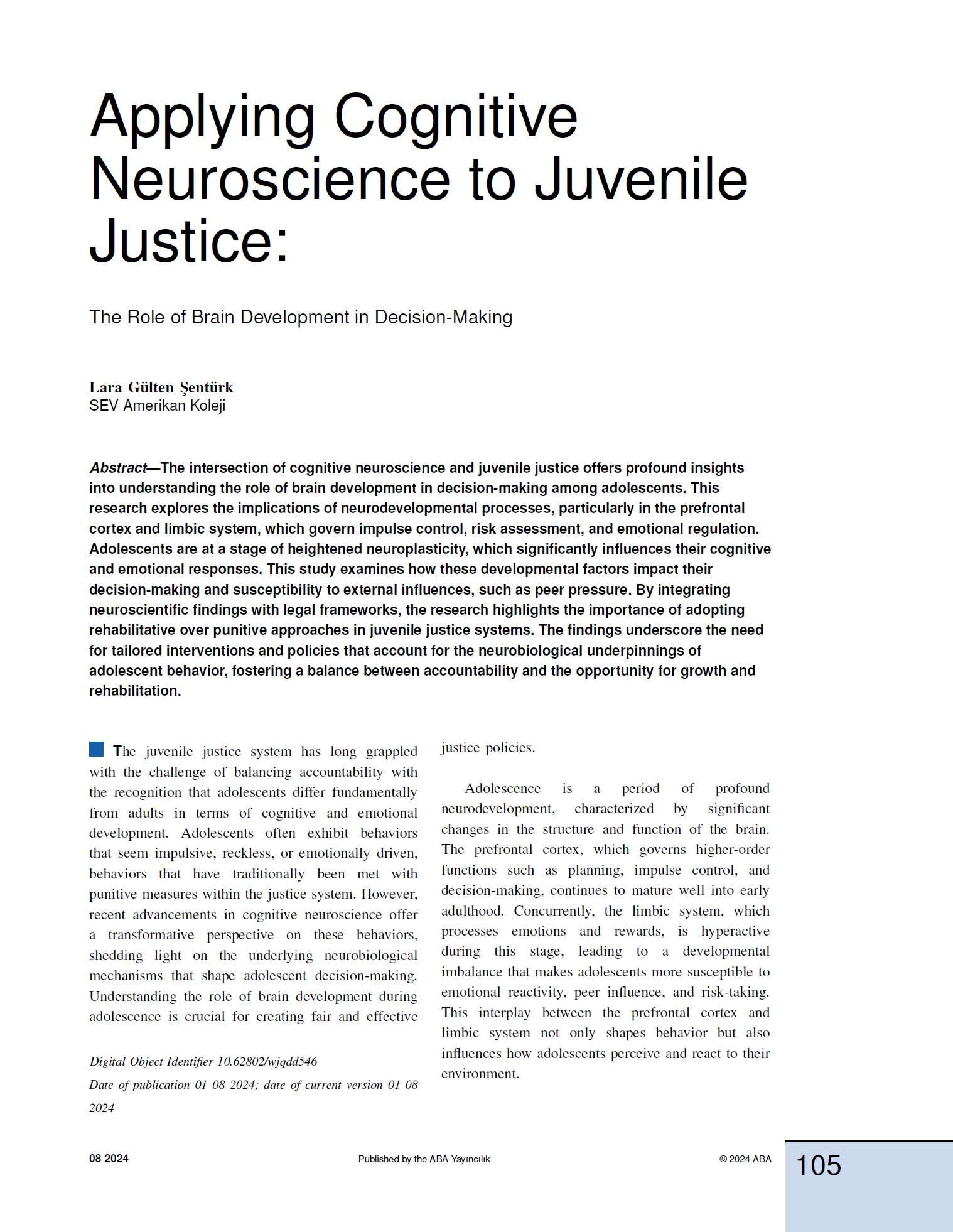Applying Cognitive Neuroscience to Juvenile Justice: The Role of Brain Development in Decision-Making
DOI:
https://doi.org/10.62802/9dnrnj41Keywords:
Cognitive neuroscience, juvenile justice, brain development, adolescent decision-making, neuroplasticity, prefrontal cortex, emotional regulation, rehabilitative justiceAbstract
The intersection of cognitive neuroscience and juvenile justice offers profound insights into understanding the role of brain development in decision-making among adolescents. This research explores the implications of neurodevelopmental processes, particularly in the prefrontal cortex and limbic system, which govern impulse control, risk assessment, and emotional regulation. Adolescents are at a stage of heightened neuroplasticity, which significantly influences their cognitive and emotional responses. This study examines how these developmental factors impact their decision-making and susceptibility to external influences, such as peer pressure. By integrating neuroscientific findings with legal frameworks, the research highlights the importance of adopting rehabilitative over punitive approaches in juvenile justice systems. The findings underscore the need for tailored interventions and policies that account for the neurobiological underpinnings of adolescent behavior, fostering a balance between accountability and the opportunity for growth and rehabilitation.
References
Bendo, D., Goodwin-De Faria, C., Baruth, C., & Moore, M. (2024). Difficult ‘By Design’: Viewpoints of Crown Attorneys and Defense Counsel Working With Youth With Intellectual and Developmental Disabilities in the Youth Justice System. Youth Justice, 14732254241237189.
Diaz, J. D., Frazier, C., & Jacobs, L. (2024). Adjudicating discretion in youth cases: Research, law, and policy for consideration in immigration proceedings.
Edwards, R. C., Planalp, E. M., Enlow, M. B., Akshoomoff, N., Bodison, S. C., Brennan, M. B., ... & Workgroup, C. C. I. (2024). Capturing the complexity of child behavior and caregiver-child interactions in the HEALthy Brain and Child Development (HBCD) Study using a rigorous and equitable approach. Developmental Cognitive Neuroscience, 69, 101422.
Majeed, M., Parveen, A., & Zahoor, M. A. (2024). The Role of Judiciary and Police in Juvenile Delinquency: A Comprehensive Examination. Annals of Human and Social Sciences, 5(2), 194-204.
Quas, J. A. (2024). The Oxford Handbook of Developmental Psychology and the Law. Oxford University Press.
Ravindranath, O., Perica, M. I., Parr, A. C., Ojha, A., McKeon, S. D., Montano, G., ... & Edmiston, E. K. (2024). Adolescent neurocognitive development and decision-making abilities regarding gender-affirming care. Developmental Cognitive Neuroscience, 101351.
Robles-Ramamurthy, B., Bath, E., Lowenhaupt, E. A., & Tolou-Shams, M. (2024). Advancing Youth Justice: The Child and Adolescent Psychiatrist’s Role. Child and Adolescent Psychiatric Clinics, 33(3), 397-409.
Sbeglia, C., Beardslee, J., & Cauffman, E. (2024). Adolescent development and justice; bridging science with practice: How should the legal system respond to juveniles charged with homicide? A developmental perspective. In The Routledge International Handbook of Juvenile Homicide (pp. 519-531). Routledge.
Timmer, A., Antonaccio, O., French, M. T., & Botchkovar, E. V. (2024). Youth decision-making and crime: influences of stressful conditions, adverse mental and physical states, and conventional activities. Crime & Delinquency, 70(1), 87-125.
Toenders, Y. J., Green, K. H., Te Brinke, L. W., van der Cruijsen, R., van de Groep, S., & Crone, E. A. (2024). From developmental neuroscience to policy: a novel framework based on participatory research. Developmental Cognitive Neuroscience, 101398.









